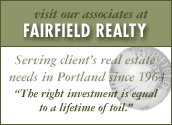Raw Land Properties
We seem to have touched a nerve with our raw land loan product. It is very popular with our client base, and it is easy to understand why. First of all, the banks pretty much stay away from raw land. There is no way to process raw land loans with an assembly line approach to lending. The only way to evaluate a raw land loan is to put on your boots, roll up your sleeves, and prepare to get a bit dirty. It is also necessary to review stacks of documentation, have conversations with city and county governmental authorities, and to make decisions based on an assessment of various probabilities with the understanding that there are no certainties when it comes to raw land development.
So, as it turns out, our only real competitors in this niche--as far as I can tell--are other private money and equity type lenders. Well, for some reason that I don't really understand, many of those lenders won't loan more than about 50-55% LTV on raw land. We feel that this gives us a significant edge, as we are able to offer loans on raw land at as high as 75% LTV. Let me give you one example of the kind of thing that we do.
Scenario: We were approached by a developer seeking a loan on a forty acre parcel of land just outside the city limits of Eugene, Oregon. Our borrower was in the process of applying for a zoning change, which would allow him to then subdivide the property into four ten acre lots. If all went according to plan, he stood to make a very tidy little profit.
Problem: Our borrower needed a loan for 75% LTV on raw land and needed to base the value assessment on the future value of the lots. The future value of the lots was based on the borrower being able to successfully obtain the zoning change and then successfully complete a partition, via the county, into four separate building lots.
Analysis: We went out and walked the property with the borrower. We also visited and walked a number of comparable properties. We listened to our borrower's plan and his explanation of why he believed it would be successful. We reviewed all of his correspondence with the county and his zoning change application and all of the supporting documentation. We talked to the county ourselves to assess the probability of success. We spent easily 30 hours researching this project, and in the end we concluded that our borrower was for real and that his plans were on target and we determined that there was a very high likelihood that he would succeed.
Solution: We arranged a $375,000 loan (at 75% LTV based on future value), with a three year term and a rate of 13% per annum. The loan involved a construction holdback for money to be spent on development of the lots, and we included 18 month's worth of pre-paid interest in the loan, so the borrower would have no cash commitments during the development stage of his project.
--S. Clay Sparkman, Vice President








